Poetry-Inspired Collection Featuring Blooms Wins Student A Threads Magazine Award
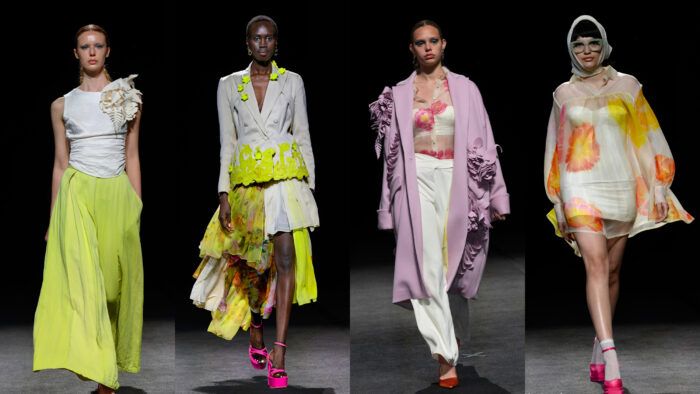
Annika Geissberger’s finely constructed garment collection delivers a joyful burst of beautiful blooms and springtime color. Her cohesive group of four interchangeable looks features striking dimensional flower embellishments, hand-painted sheer silks, and garments that change color in the sunlight. Those details, along with her meticulous hand and machine sewing on a variety of fabrics, won the recent Marist College fashion program graduate the 2024 Threads magazine sewing award for Excellence in Garment Construction.
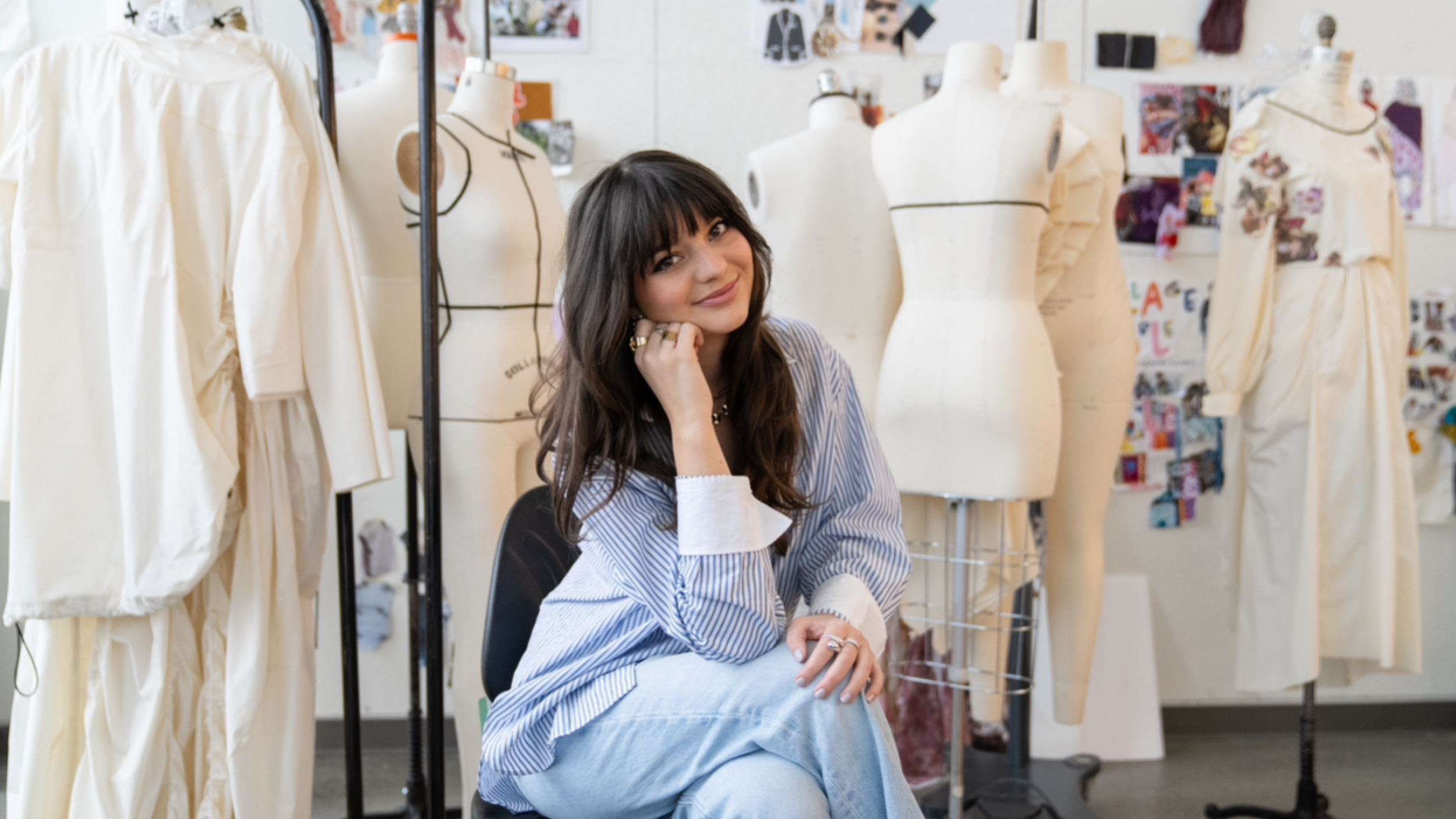
Natural Inspiration
Geissberger says her late grandmother inspired the “Bloom” collection. A spiritual woman who was a self-published poet and gardener, her grandmother loved the outdoors and writing. When she passed, she left stacks of writings and poetry-filled journals. Geissberger and her mom spent the summer of 2023 sifting through all of it.
“That was what really inspired me to use the poetry in my collection,” this aspiring creative director says. “It was a way for me to take her form of art, which was poetry, and my form of art, which is design, and match them together into something really beautiful.”
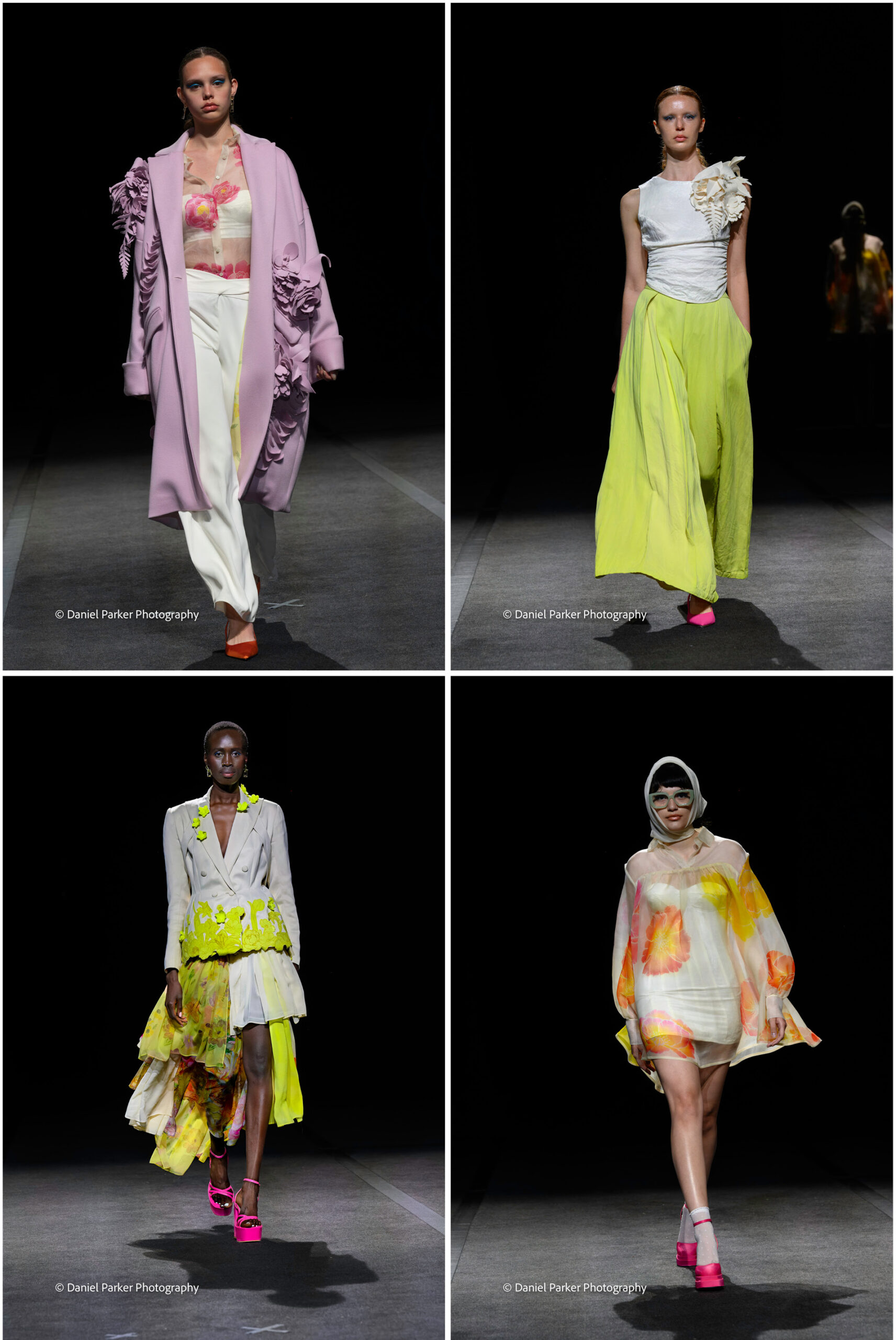
In fact, her grandmother’s poem “Moss Life” is the basis for Geissberger’s signature piece–a flower-embellished cashmere coat. The poem “zoomed in on these tiny little things that most people overlook, like moths and lichen and little mushrooms,” Geissberger explains. A close look at the oversized dropped shoulder-style coat in Geissberger’s collection reveals her interpretation: She designed and hand-stitched in place three-dimensional mushrooms and lichen hand-cut from the cashmere fabric.

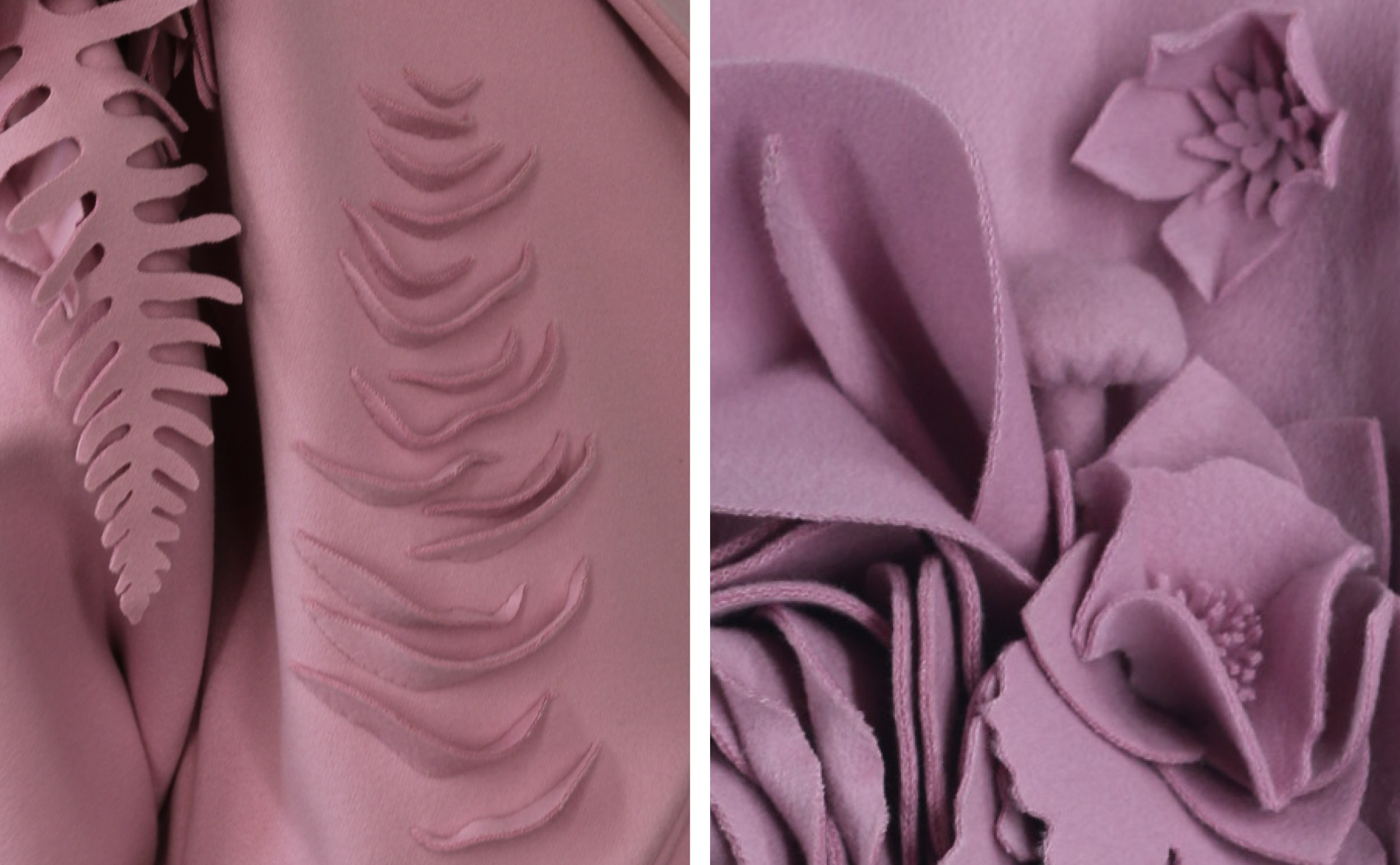
There are no fewer than a dozen types of flowers or plants represented on the coat. There are lilies and calla lilies, daffodils, ferns, forget-me-nots, marigolds, peonies and their leaves, lichen, mushrooms, orchids, and roses.
“My goal was to make it look like they were blooming out of the coat,” she says. “I didn’t want to make them look like they were sewn.”
Executing a Vision of Blooms
Creating the three-dimensional embellishment on the coat, a halter top, and a jacket in the collection was a painstaking process that required trial and error. Geissberger first made sample flowers with wire sandwiched between bonded fabrics. While that made it easy to form the petals, the flowers did not seem wearable, the self-proclaimed perfectionist notes.
She ditched the wire, consulted with her professor, Sonia Roy, and experimented until she settled on simply bonding two fabrics using Wonder-Under fusible web. The bond created enough stiffness to shape the flowers, plus it conveniently clean-finished the edges of the double-sided, fused fabric.
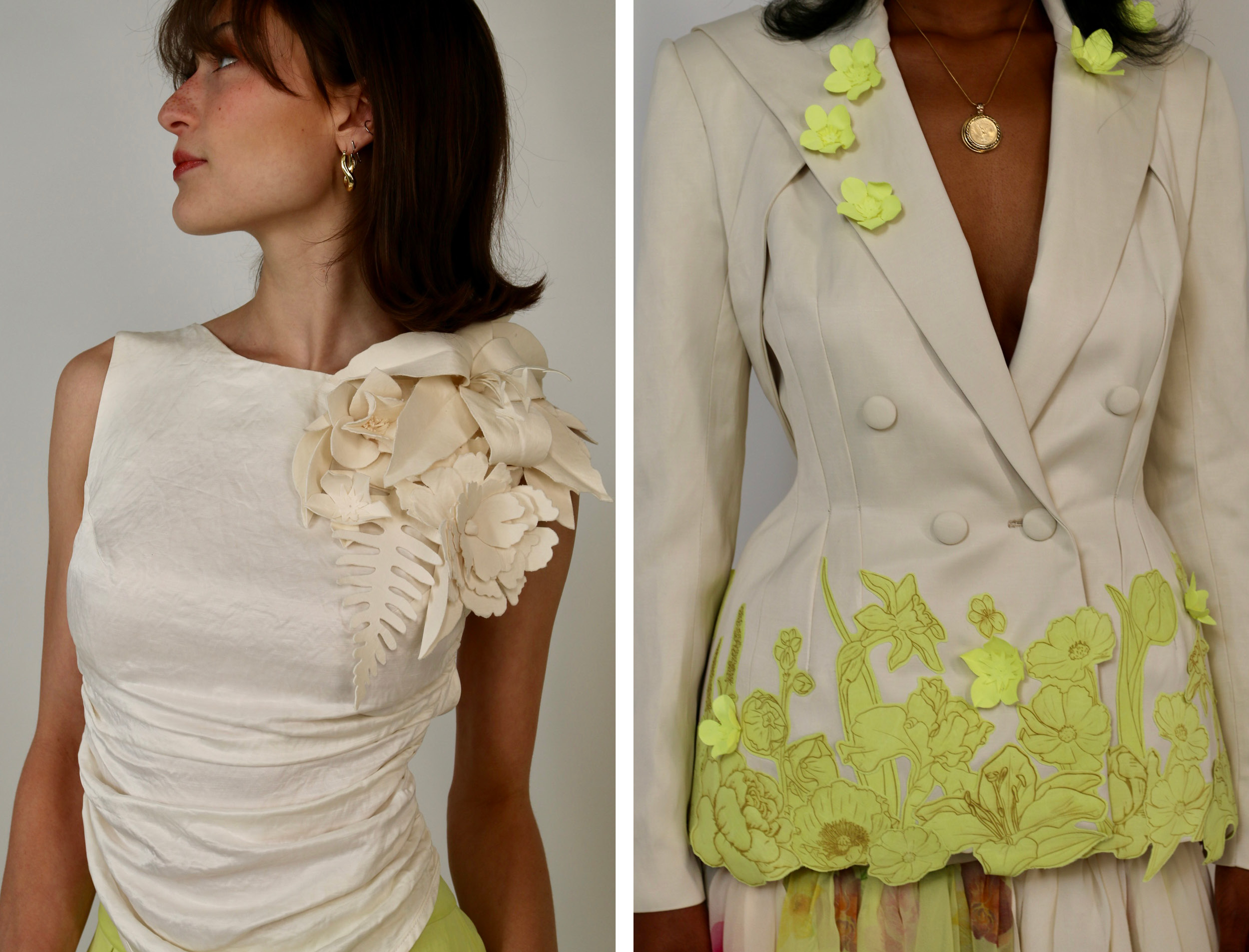
“As far as the cashmere coat, those flowers I didn’t have to bond because the cashmere already had enough structure, it was already thick enough, so I was able to just create those through the hand-tacking.”
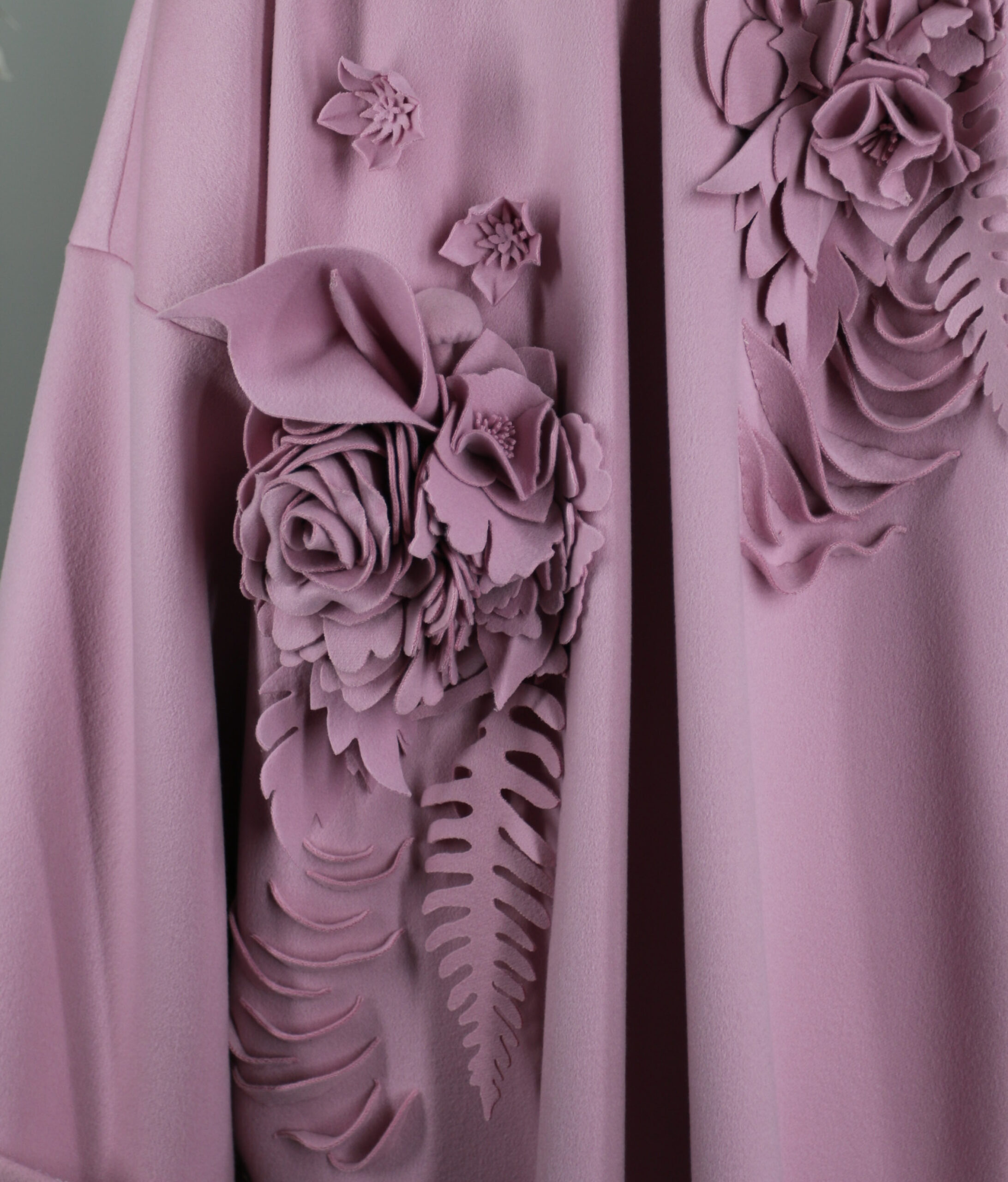
She kept the sewing thread thin and mostly used a long, slender beading needle to make the hand stitches inconspicuous on all the embellished garments. Her hand sewing, which she learned as a youngster from a teacher named Sewing Sally, clearly paid off.
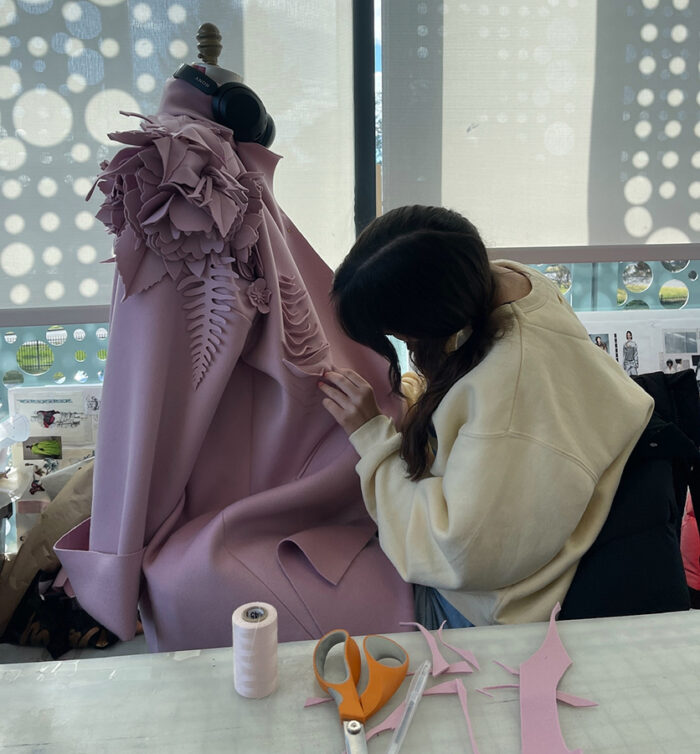
First Came Patternwork
Well before the hand stitching, Geissberger had pored over her grandmother’s poetry—beyond “Moth Life”—and came up with “a very long list of flowers that I wanted to include” in the collection. “I went one by one, finding photos of the flowers and then going on pattern paper and just winging it, creating patterns of what I thought would work,” she says. “I traced my patterns directly onto the fabric with heat-erasing pens, and then I just used really sharp fabric scissors to cut out each flower.”
In the case of the lily flower, she says she cut two pieces complete with wavy edges and crease details. The pieces had three connected petals, shaped almost like a throwing star. She stacked them and hand-tacked them to the garment for the three-dimensional effect.
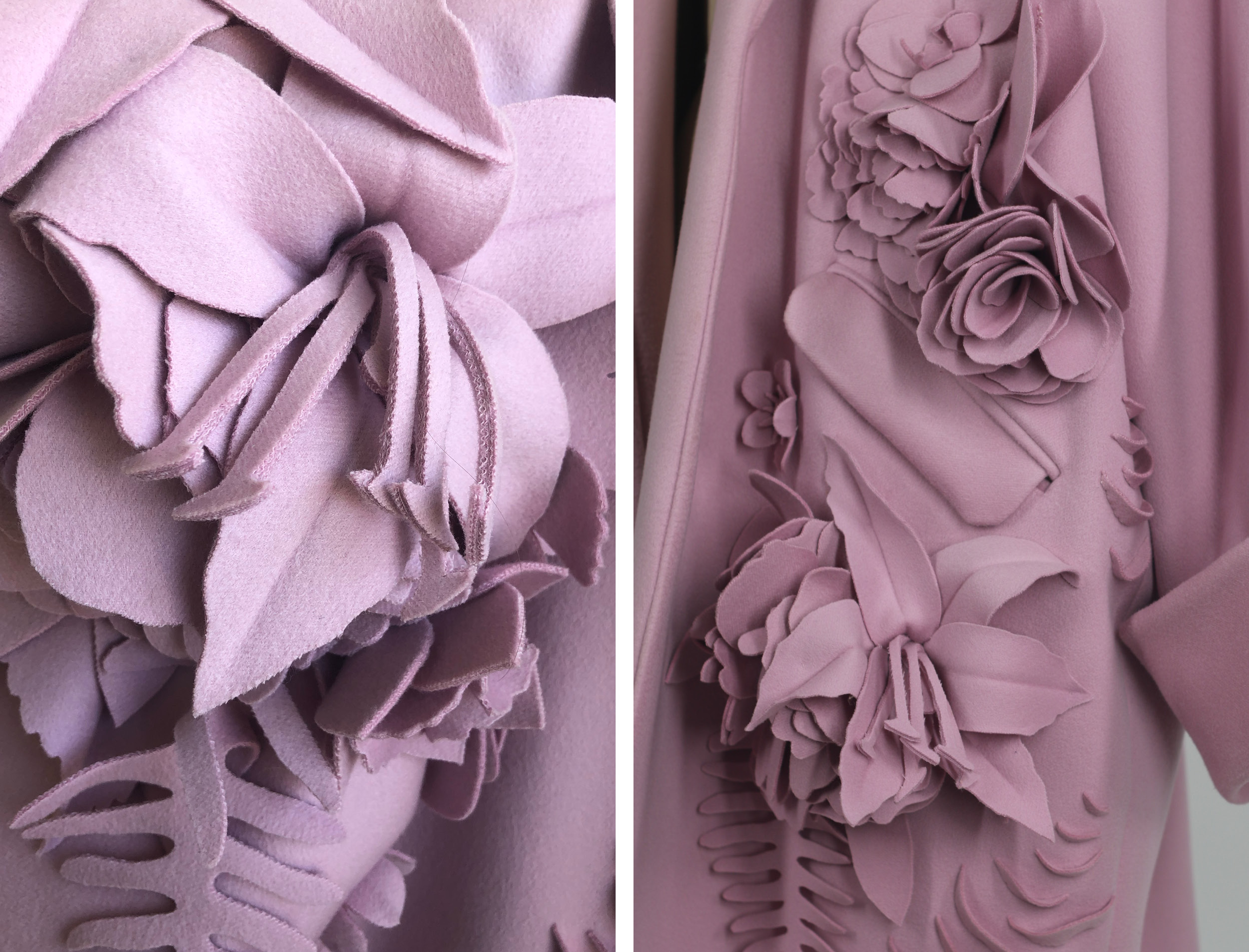
Painting Flowers on Silk
“I loved doing all the details. All the prints in the collection I hand-painted, hand-drew, or created digitally.”
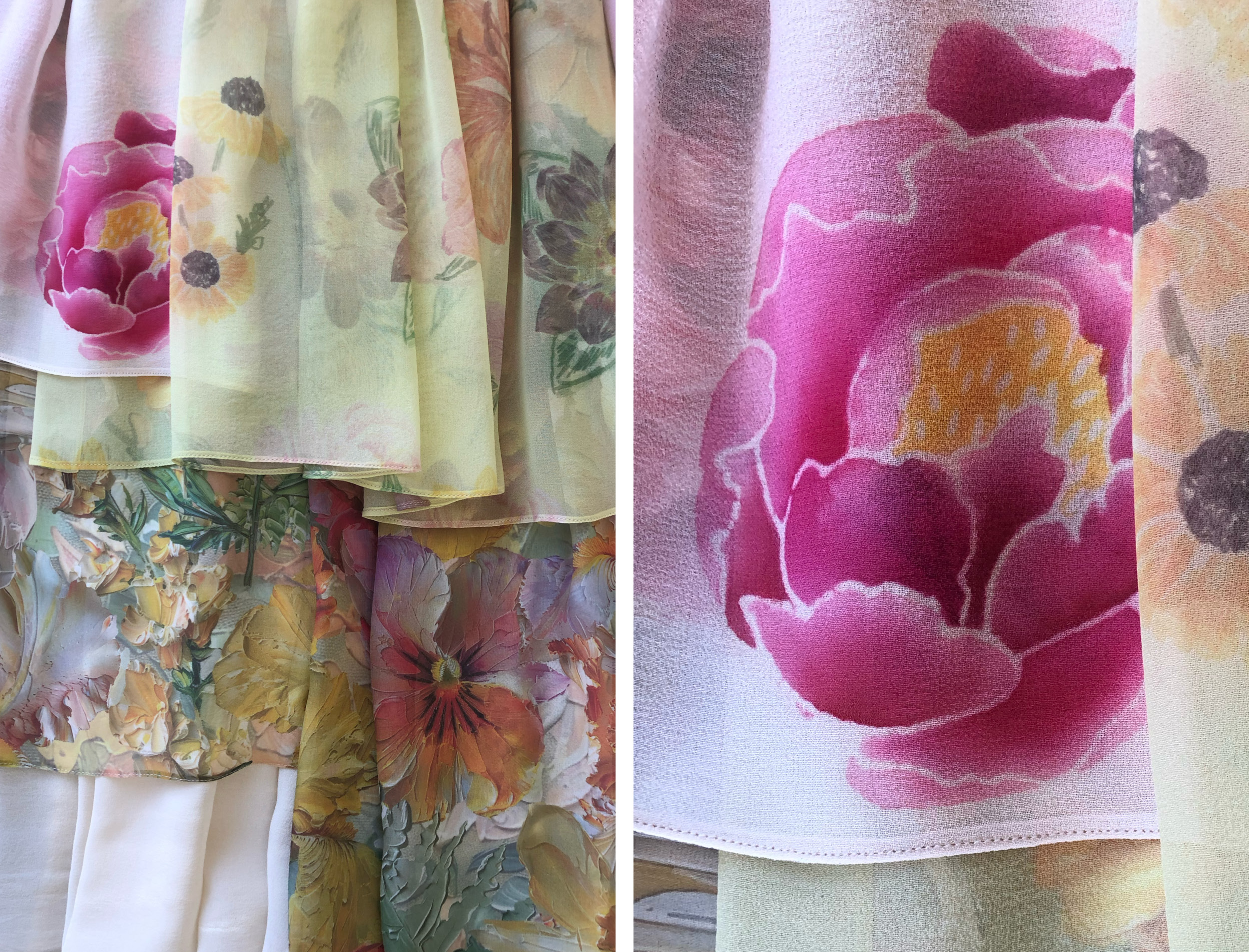
That included the coat lining, the skirt’s silk chiffon panels, and the fully hand-painted silk organza dress and button-front shirt. Silk painting “takes hours upon hours—even more so than I had planned out for,” Geissberger recalls.
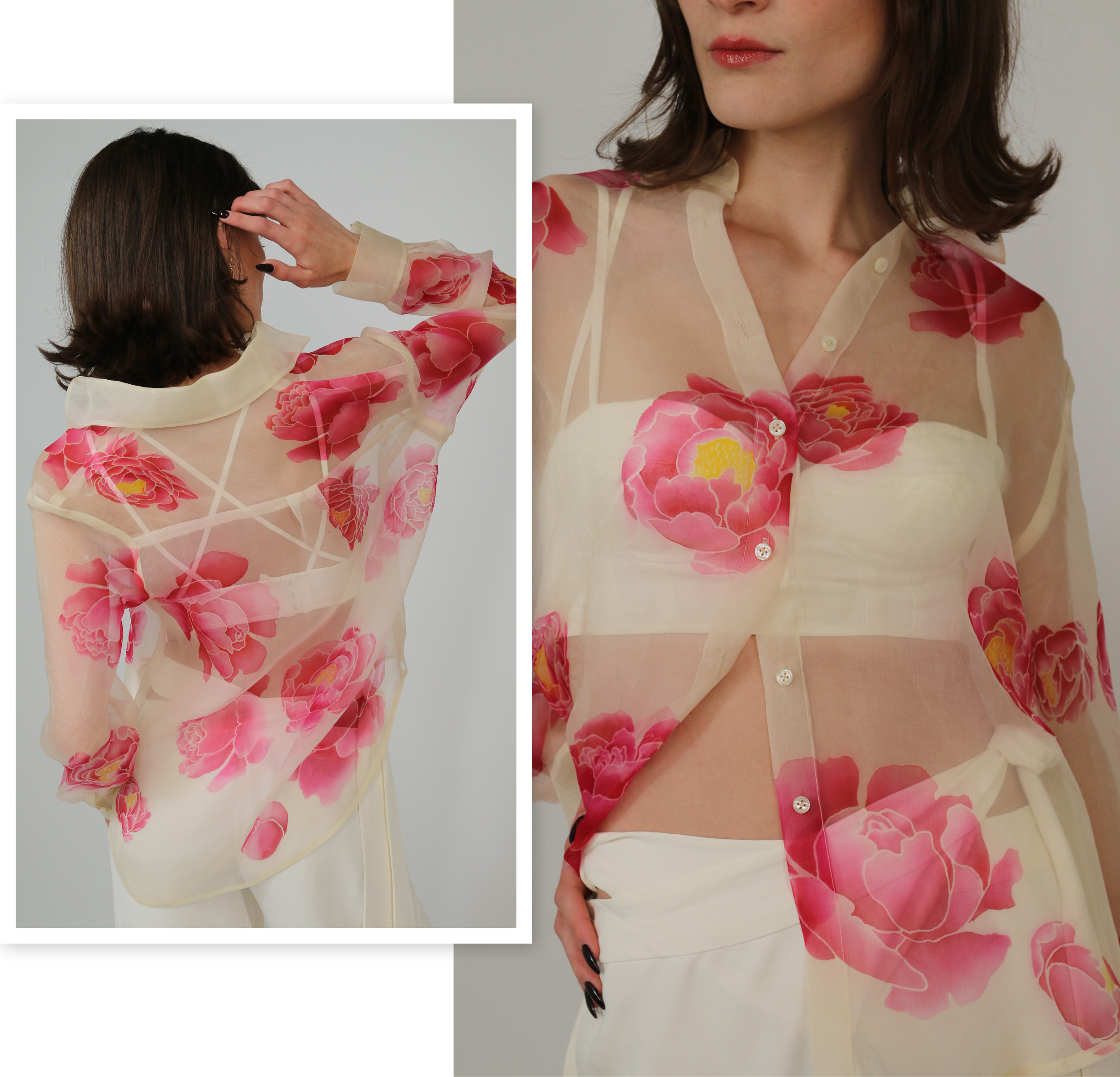
She is particularly proud of the poppies she says she designed and painted on the sheer organza dress in the traditional California poppy coloring, a nod to her northern California home.
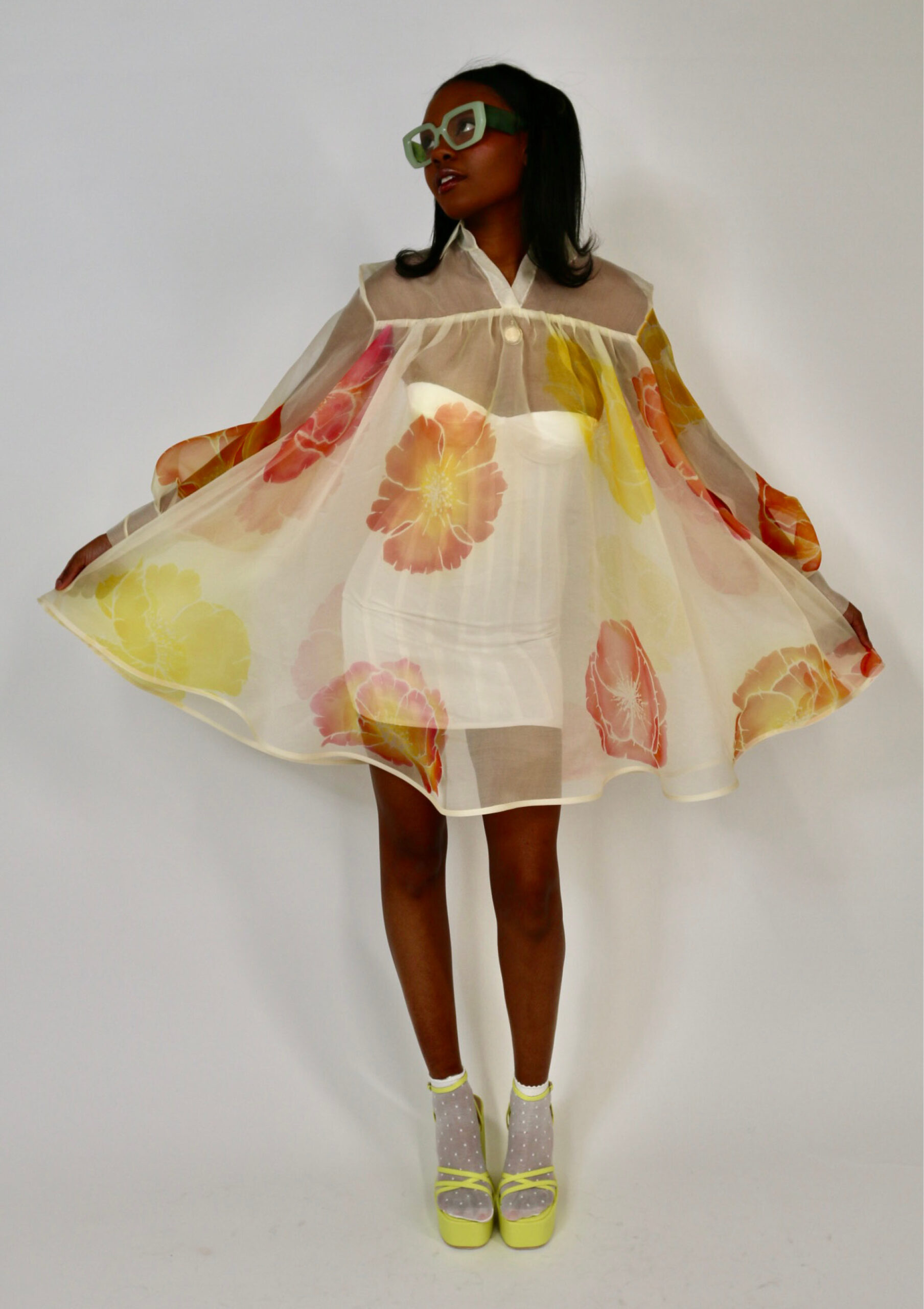
Meticulous Sewing and French Seaming
Geissberger has been machine-sewing since the fourth grade when Santa left her a Brother machine under the tree. It’s no surprise the flap welt pockets and linings in the coat and jacket have a professional look.
She also finished most of the silk organza dress and the button-front shirt with impeccably sewn French seams. The exceptions were bias-bound armholes and hem on the dress.
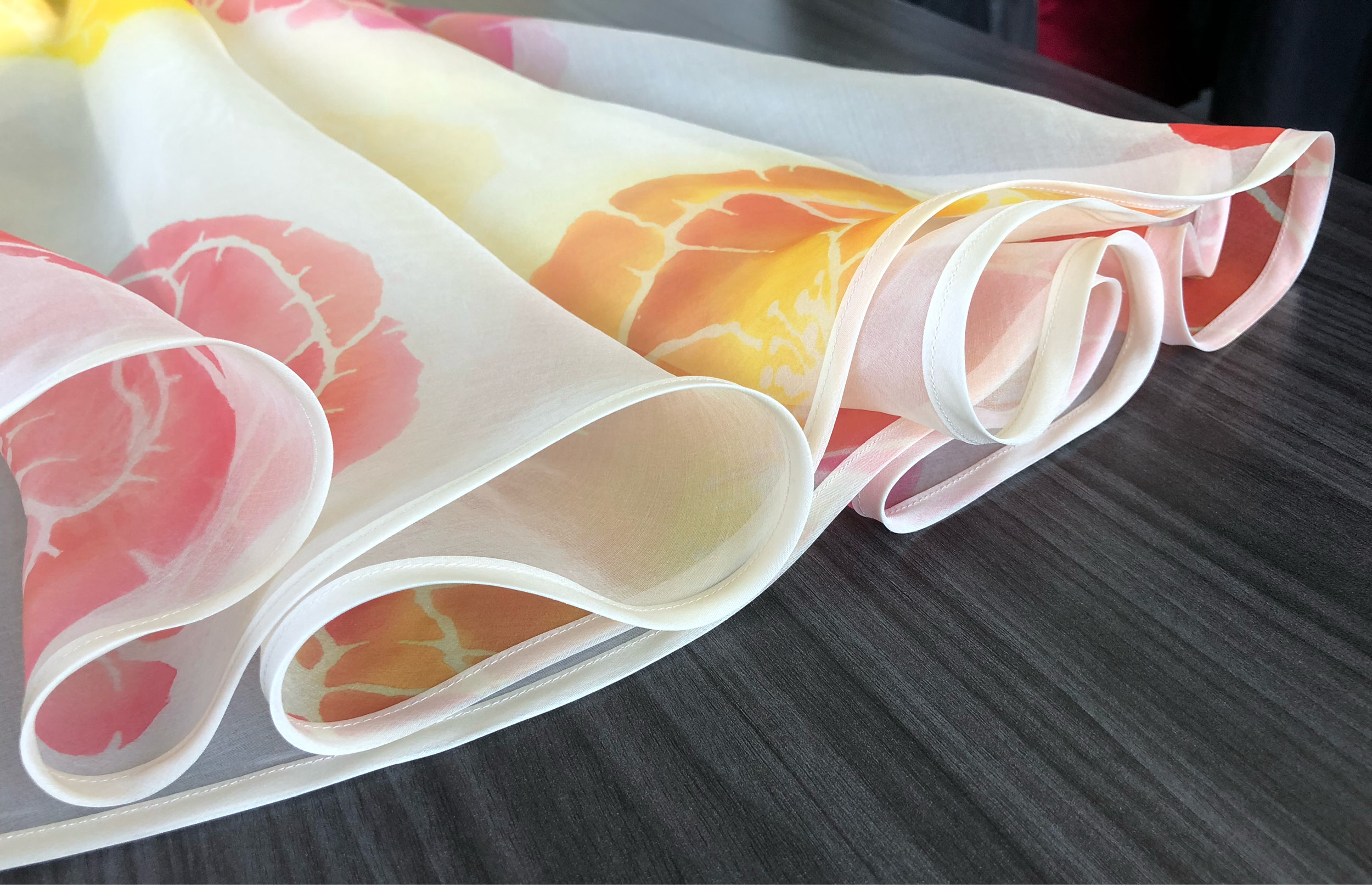
The 18-panel corset dress design underneath was perhaps more challenging. Geissberger’s professors at Marist College couldn’t dissuade her from using the shiny linen suiting she had chosen, even though it would be more work to get a precise fit than if she had selected a stretch fabric. Geissberger sewed French seams for this garment, too, which also served as channels for the boning.
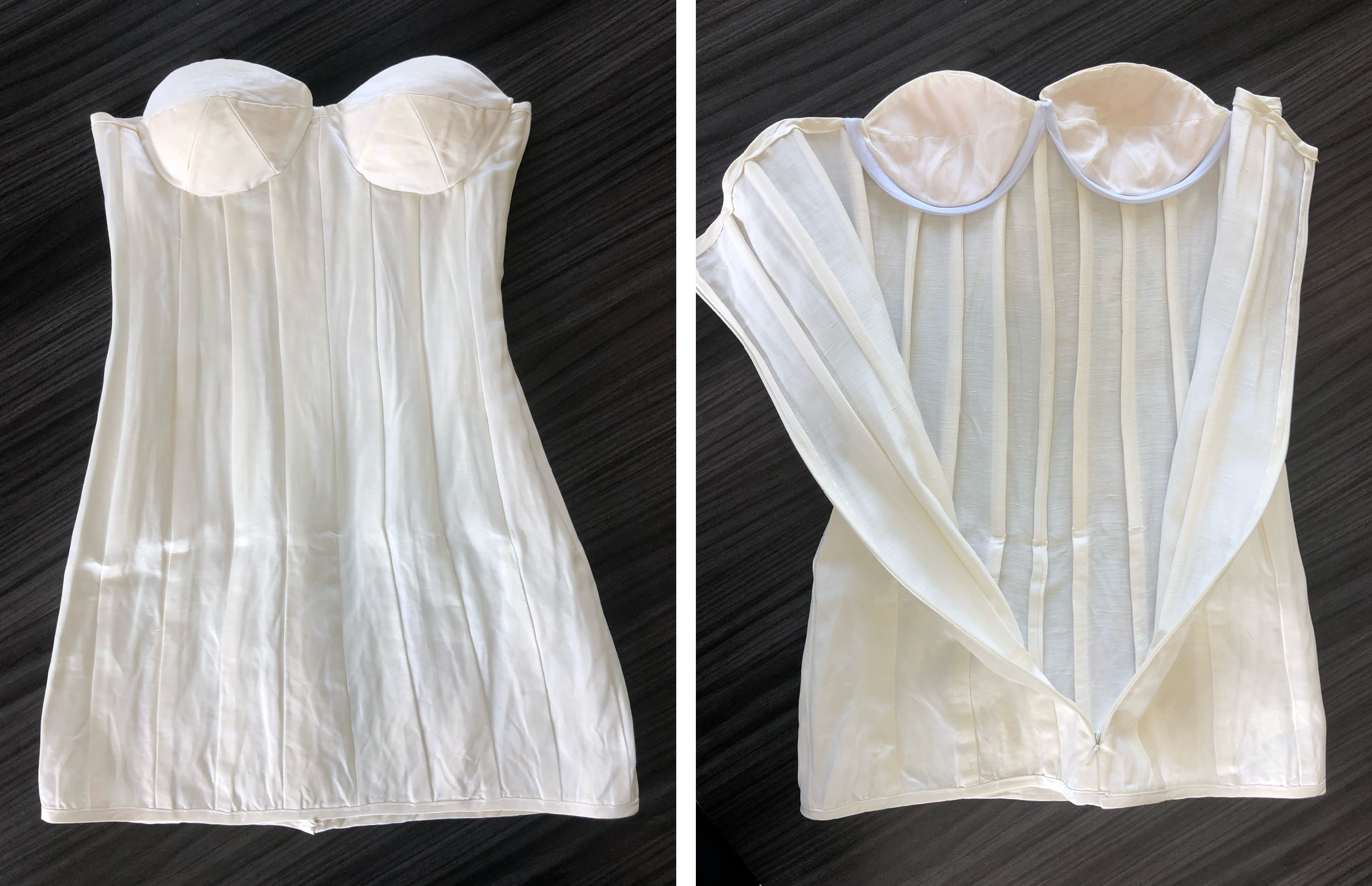
Color-Changing Dyes
An extra layer of work with the already challenging dress came at the beginning, when Geissberger dyed the fabric with photochromic dye. This type of dye creates reversible color changes when exposed to the sun or ultraviolet light. She applied the UV-activated dyes in different hues to the halter top, jacket, two pairs of pants, and a bra in her collection, too.
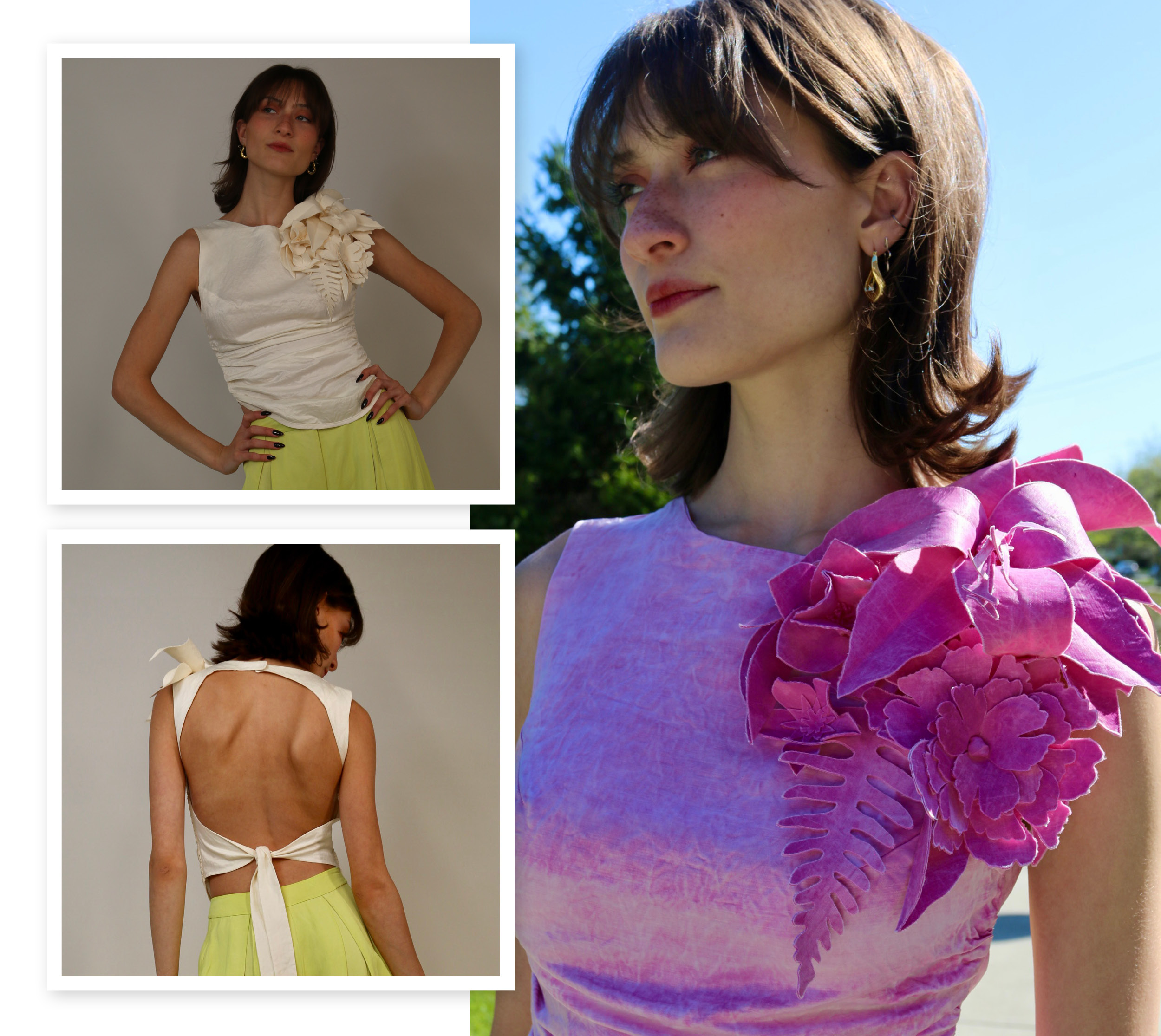
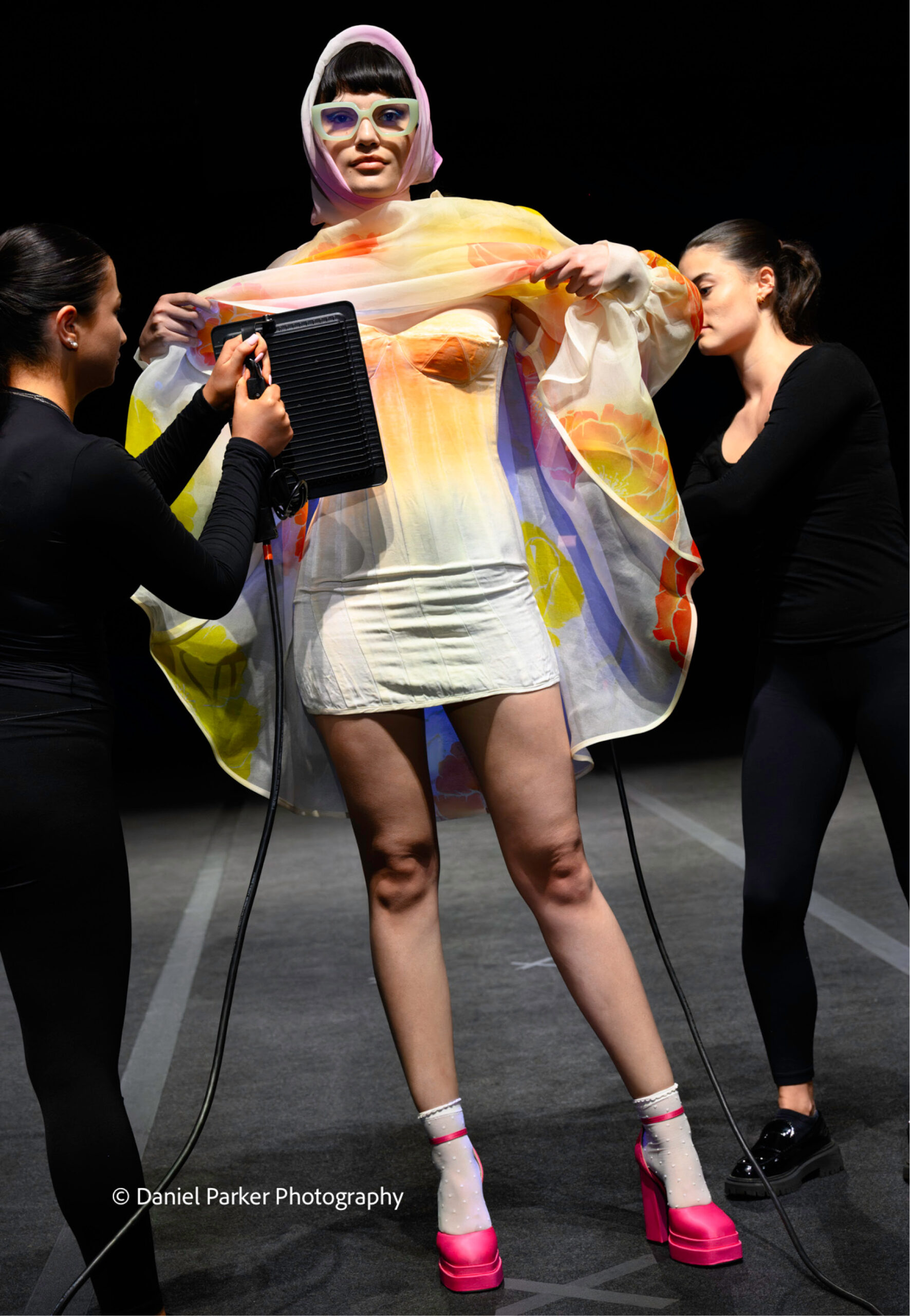
The dyes were another way Geissberger paid tribute to her grandmother, who had drawn so much inspiration from nature, and who had always invited others to join her in her favorite place, the outdoors.
“The idea behind the color-changing is that the garments reach their fullest potential when they’re outside,” Geissberger explains. “That’s when they’re all these bright colors and it takes a whole other turn.”
She adds, “There’s also the cool aspect that someone can wear this little white corset dress and go out at night and it’s sleek and sexy. And they can wear it the next day under the (sheer) dress and it’s bright orange.”
Challenges
“I think the most challenging part was taking all of these ideas and not only trying to make them cohesive but also trying to fit them within the timeline of the semester,” the recent graduate reflects. It took following a strict timeline she had detailed on “crazy” charts, plus a lot of late hours. She managed to get everything accomplished at the level she hoped.
“I was so happy with how everything turned out,” she says. “I wouldn’t change anything.”
Editor’s note: To hear more about Annika’s collection, watch her interview on Instagram here.
Photos: (runway) Daniel Parker Photography; (all others) courtesy of Annika Geissberger except where noted.

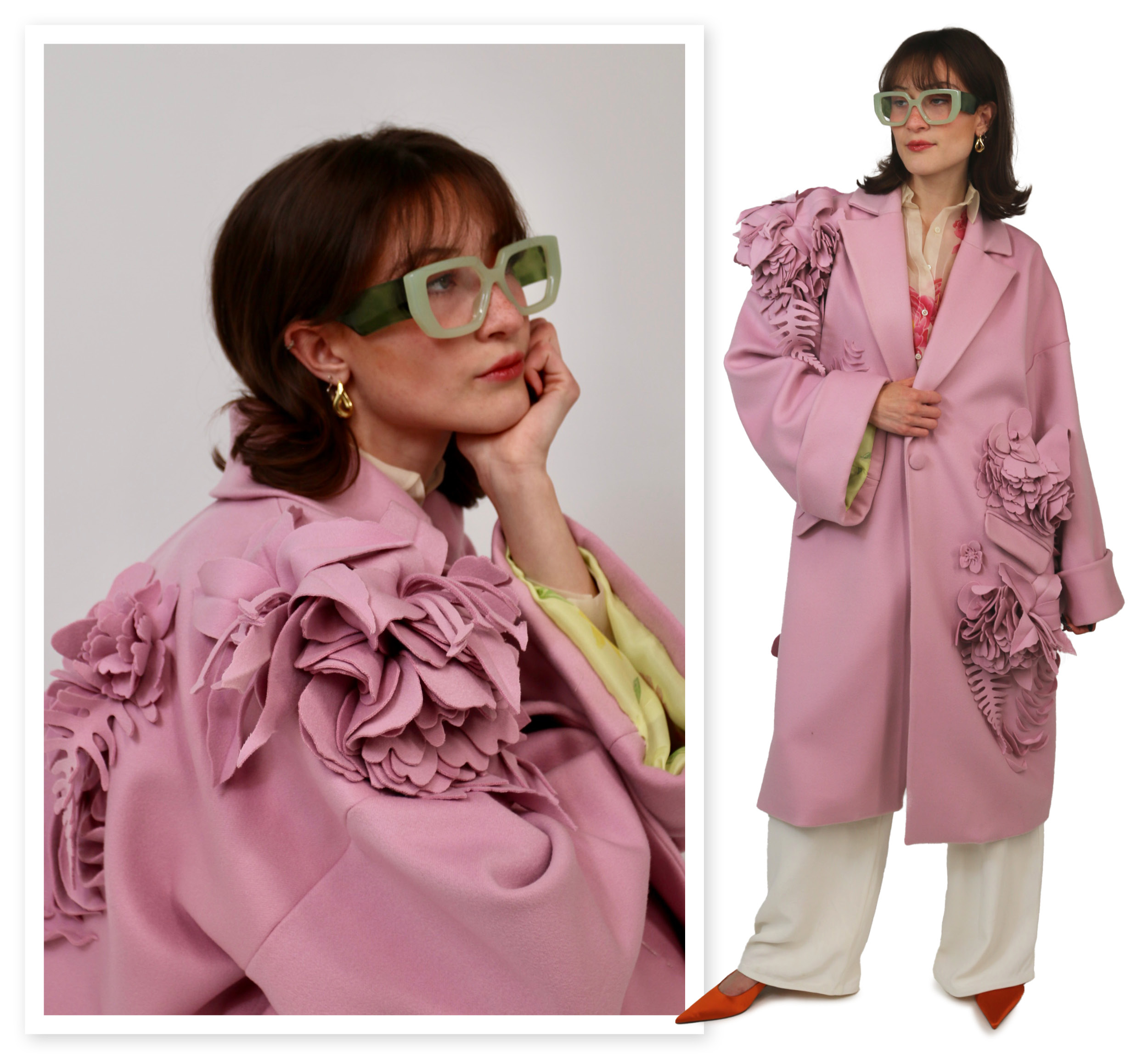
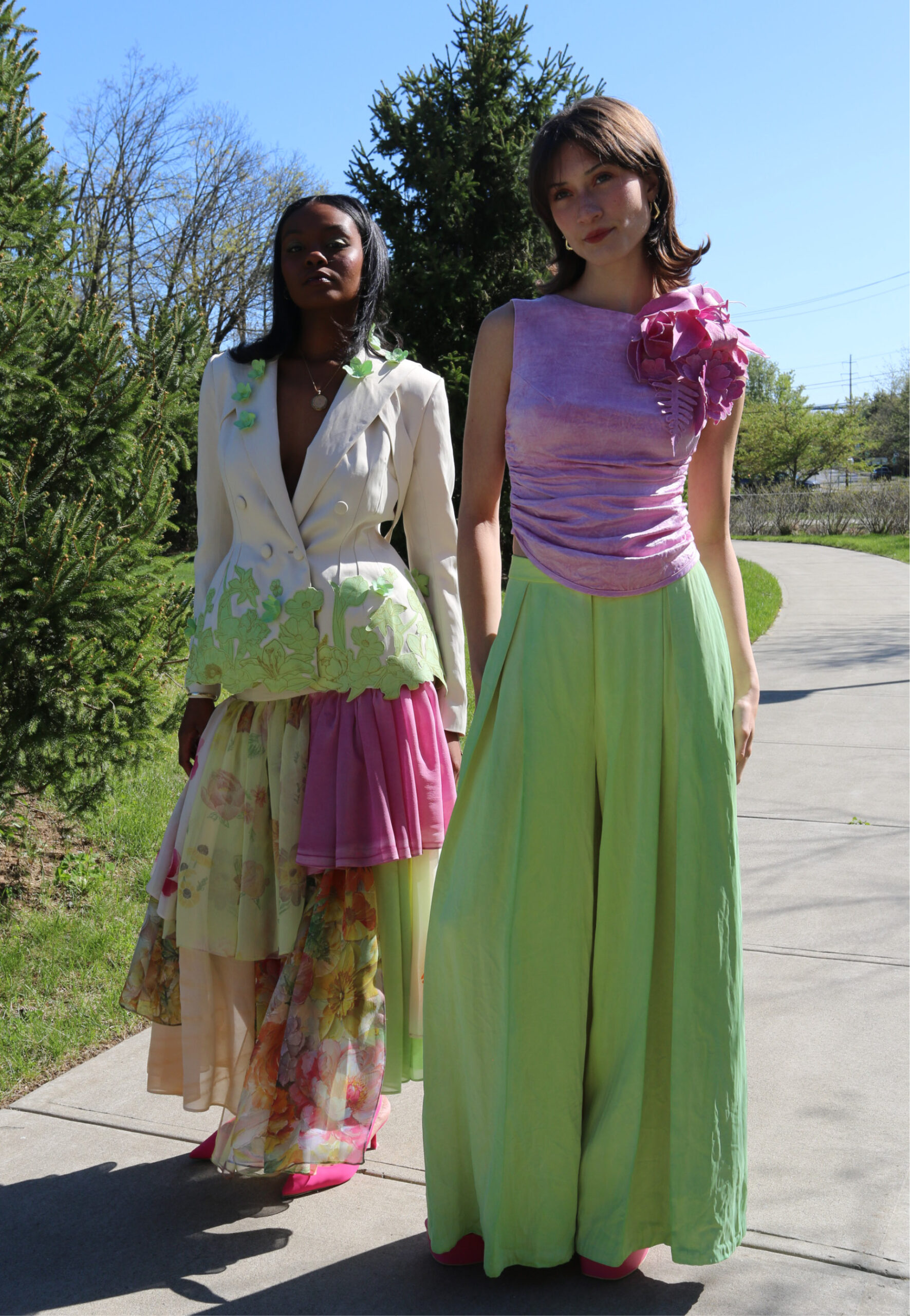
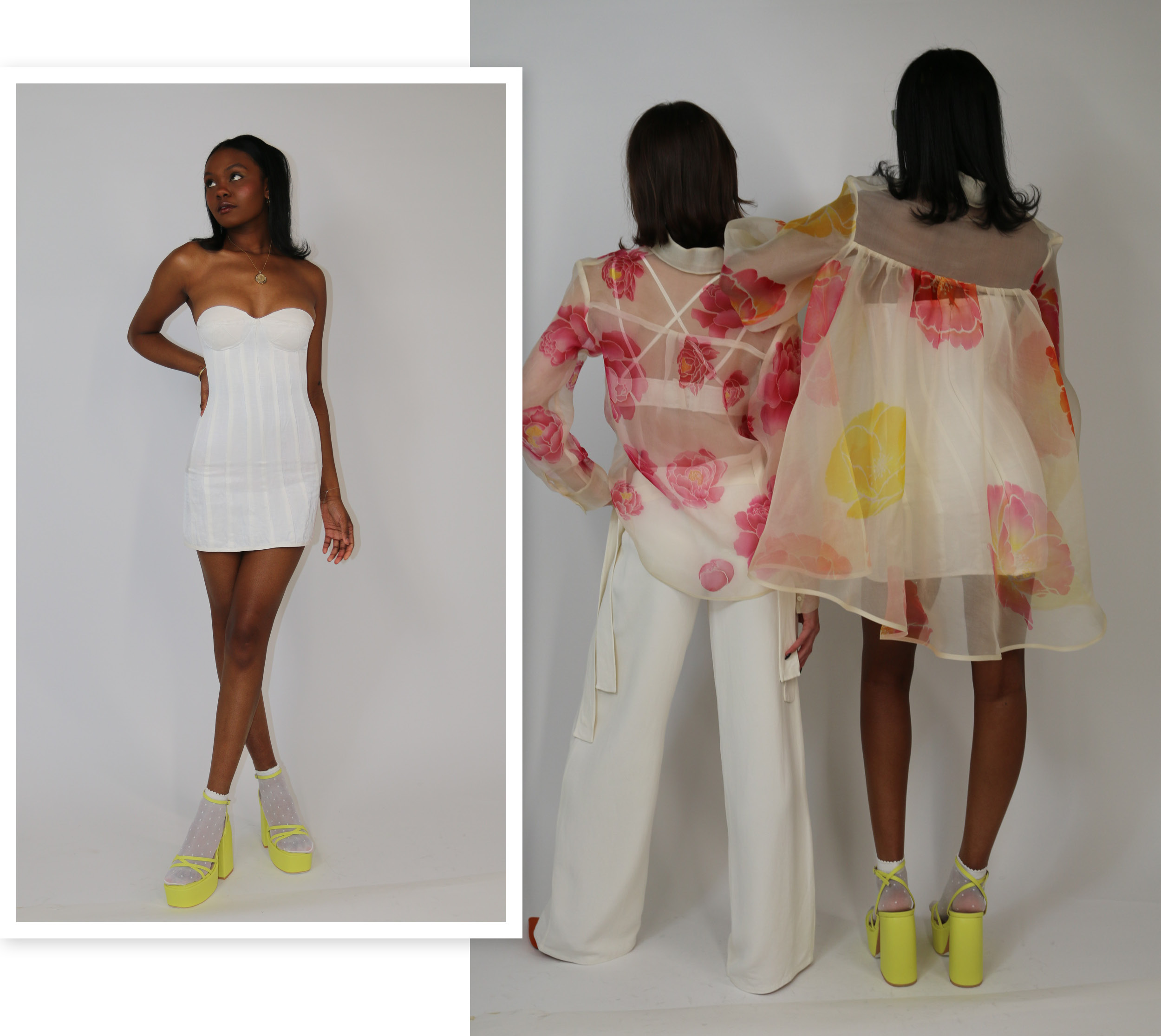





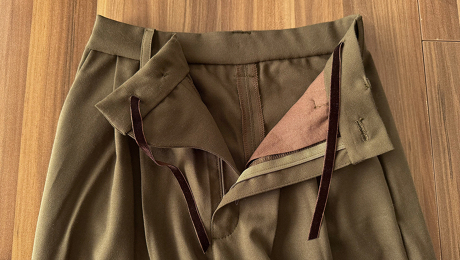






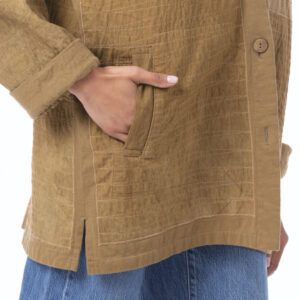

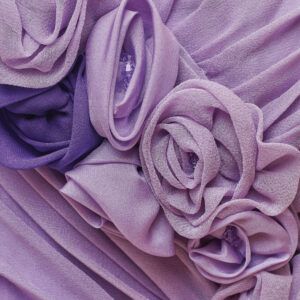

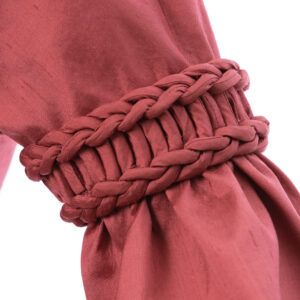

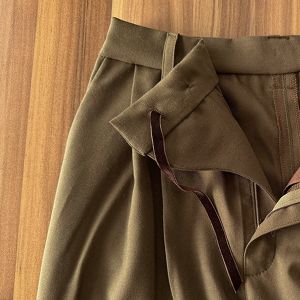














Log in or create an account to post a comment.
Sign up Log in